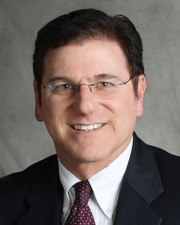News: Front Section
Posted: March 21, 2013
Cost-cutting ideas for postal service
Our Postal Service suffered a $15.9 billion loss last year; their costs were $70 billion. Not surprising. It's much more expensive to mail a letter or a bill payment than to use email.
More than 25 years ago, I wrote to the U.S. Postmaster General and to the chairman of the Congressional Postal Regulations Committee (email hadn't arrived yet) with some cost-cutting ideas. I saved a copy of the Postmaster's reply which, not surprisingly, consisted of a typewritten page of bureaucratic excuses.
My first suggestion was to eliminate Saturday delivery. Now the USPS wants to cut Saturday service to save $2 billion annually (starting in August). If they had listened when I first sent the suggestion, they already would have saved $50 billion.
It may seem odd that a marketing/PR pro would support cutting back on the very service that delivers so much promotional material. But offers made in flyers that arrive on Saturday will still arouse interest when opened on Monday.
The second suggestion was to allow paid advertising on the side of Post Office trucks. They tried a pilot program, selling ads only on trucks owned by companies that contract with the USPS. Ads cost $500 per month. Advertisers were chosen carefully, like agencies promoting seat belt use, and anti-drug and anti-alcohol messages.
The USPS operates the world's largest civilian fleet, paying $1 billion a year for fuel. They have over 200,000 vehicles traveling 1.2 billion miles each year. If they allowed advertising on just the 15,000 8-wheelers, that would bring in $500 (per ad space) x 12 (months) x 15,000 (trucks) - almost $100 million each year. Imagine if they sold ads on all 200,000 vehicles: $1.2 billion per year!
Why hasn't the USPS continued the vehicle ad program? They're "deeply concerned" about damage to their brand. Their spokesman said, "We have no plans to roll out any advertising on our own trucks. The limited advertising on trucks owned by private companies was a short-term pilot in Colorado." In a 2009 poll, 71% agreed that selling ads on USPS property is a good idea. In recent years, ads on public transit, school buses and even police cars haven't affected their brands.
My third idea from 25 years ago was to sell ads on the back of postage stamps. Stamp sales are way down due to email, social media, cell phones, texting, etc., but the USPS still sells 27 billion stamps each year. If they charged just 10 cents per stamp ad, it would bring in $27 million each year. (This reminds me of one of my favorite jokes, but you'll have to contact me to hear it.)
The bottom line: If they had listened to my ideas 25+ years ago, the USPS would have saved over $75 billion. As the late Senator Everett Dirksen once said, "A billion here, a billion there -- soon you're talking about real money."
All of which brings me to my point: There are many creative ways and places to get your company or product noticed. The right creative person can develop the right message and find the right vehicles.
Stanley Hurwitz is president/founder of Creative Communications, Stoughton, Mass.
Tags:
Front Section
MORE FROM Front Section
Newmark negotiates sale of 10 Liberty Sq. and 12 Post Office Sq.
Boston, MA Newmark has completed the sale of 10 Liberty Sq. and 12 Post Office Sq. Newmark co-head of U.S. Capital Markets Robert Griffin and Boston Capital Markets executive vice chairman Edward Maher, vice chairman Matthew Pullen, executive managing director James Tribble,

Columns and Thought Leadership

How COVID-19 has impacted office leasing - by Noble Allen and John Sokul
To say that the effects of COVID-19 has transformed office leasing is an understatement. When COVID-19 was at its peak, office spaces were practically abandoned either through governmental mandates or through actions taken by businesses themselves.

Make PR pop by highlighting unique angles - by Stanley Hurwitz
Coming out of the pandemic, a client with three hotels in Provincetown, Mass., needed ways to let the world know his properties were open for business for the 2021 tourist season.

Five ways to ruin a Section 1031 Like-Kind Exchange - by Bill Lopriore
While there is some flexibility when structuring a like-kind exchange, some important requirements must be met. A mistake can ruin your exchange. Here are five mistakes to avoid:

Four tips for a smooth 1031 Exchange - by Bill Lopriore
Many real estate investors do not understand the specific requirements that must be met to secure the benefits of a tax-deferred 1031 exchange. For example, the replacement property must be identified within 45 days of the closing date of the relinquished property.







